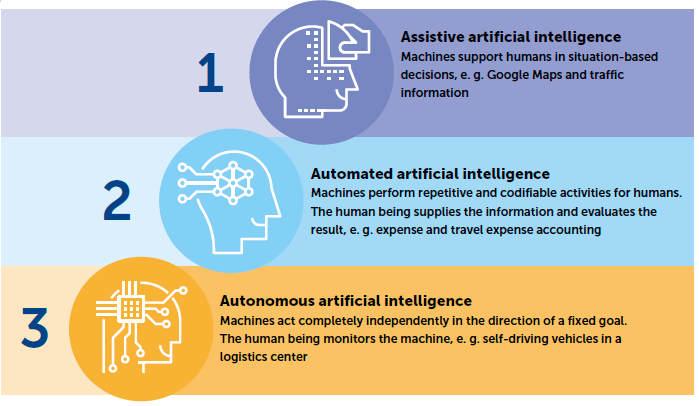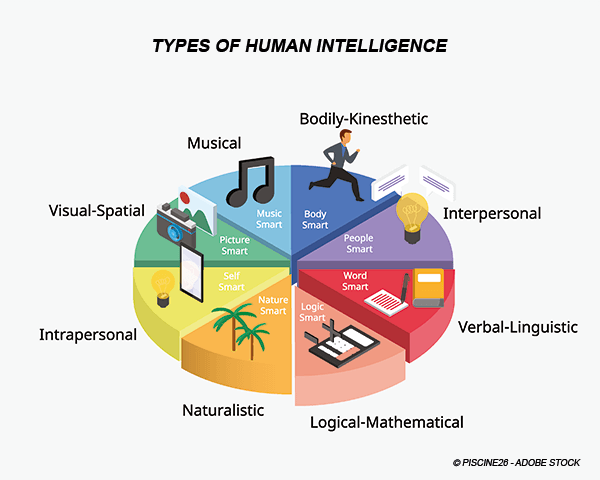Introduction
Artificial intelligence has come a long way from the fictional AI character JARVIS to real-life ChatGPT. However, human intelligence is an attribute that supports individuals in learning, comprehending, and coming up with innovative solutions to challenges, versus artificial intelligence, which imitates humans based on provided data. Since AI has become so prevalent today, a new discussion, artificial intelligence vs. human intelligence, has emerged comparing the two rival paradigms.
Table of contents
- What is Artificial Intelligence?
- What is Human Intelligence?
- Artificial Intelligence vs. Human Intelligence
- What AI Cannot Do without – The “Human” Factor
- In-demand Machine Learning Skills
- Artificial Intelligence vs. Human Intelligence: What Future Holds?
- Best Machine Learning and AI Courses Online
- Conclusion
- Frequently Asked Questions
What is Artificial Intelligence?
A subfield of data science called artificial intelligence is associated with creating intelligent computers that can carry out various tasks that often call for human intelligence and perception. These sophisticated machines can learn from previous errors and historical data, analyze the surrounding circumstances, and decide on the necessary measures.
AI is an integrated field that draws on ideas and methods from many other disciplines, including computational science, cognitive sciences, language studies, neuroscience, psychology, and mathematics.
The machine is capable of self-learning, self-analysis, and self-improvement, and while processing, it requires minimal or almost no human effort.
It is utilized in practically every business, including the media industry, the healthcare industry, graphics and animation, and more, to help technologies replicate human action based on their behavior.

What is Human Intelligence?
Human intelligence refers to a person’s intellectual capacity, which enables them to reason, understand a variety of expressions, comprehend challenging concepts, solve mathematical problems, adapt to changing circumstances, use knowledge to control their environment and communicate with others.

It may offer information on matters about a specific skill set and body of knowledge, which may relate to a different human being or, in the particular instance of intelligence agents and locators, diplomatic information they had to access. Additionally, it might offer details about social networks and personal connections.
Human intelligence and behavior have their roots in a person’s distinctive admixture of genetics, childhood development, and experience with diverse events and surroundings. Furthermore, it entirely relies on the individual’s ability to use their newly acquired knowledge to transform their surroundings.
Artificial Intelligence vs. Human Intelligence
Here is an elaborated difference between human intelligence and artificial intelligence:
| Parameter | Human Intelligence | Artificial Intelligence |
| Origin | Humans are born with the capacity to reason, think, assess, and perform other cognitive tasks. | AI is an innovation created by human insights; Norbert Wiener is associated with helping to progress the field by theorizing about the mechanisms of criticism. |
| Learning Capabilities | Human intelligence can pick up new information via observations, experience, and educating oneself and put it into novel scenarios. | Using statistical models and algorithms, AI can learn from enormous amounts of data. They cannot build a uniquely human analytical style; they can only learn through data and regular training. |
| Creativity | Using innovative thinking and creativity, human intelligence can generate fresh concepts, literature, music, and art. | AI can create novel approaches using existing trends and data but lacks inherent innovation and originality. |
| Decision Making | Human decisions can be subject to subjective factors not based solely on data. | AI interprets according to completely collected data, which makes it strongly objective in decision-making. |
| Nature | Human intelligence is analogous. | Artificial intelligence uses digital machines. |
| Energy Use | The human brain uses around 25 watts of energy. | Modern-day computers use around 2 watts of energy. |
| Social Skills | The capacity to comprehend abstract concepts, the degree of self-awareness, and sensitivity to the sentiments of others distinguish humans from other social animals. | Artificial intelligence is still developing the capability to read and recognize relevant interpersonal and passionate signals. |
What AI Cannot Do without – The “Human” Factor
The artificial intelligence vs. human intelligence debate is incomplete without considering the human factor. While AI is intended to replace laborious processes with a more efficient and convenient method of accomplishing the job, it cannot replace the requirement for human involvement in the workplace. However, without human assistance, technology cannot advance. Engineers must create and test artificial intelligence systems as a prerequisite for their application to advance. AI wouldn’t work without humans, so humans and AI cannot be substituted.
People show their emotions and have the ability to interpret the facial expressions and moods of others, but artificially intelligent machines are not trained to do that. Although AI-enabled machines can mimic human speech, they lack human touch since they cannot express empathy and other emotions.
AI is based on codes that restrict it from finding creative answers to new challenges. They operate as intended, which limits their capacity to understand the context and devise sophisticated solutions.
While AI can learn extremely fast, it lacks logical thinking and is, therefore, unable to reason and challenge the facts to the same extent humans can.
In-demand Machine Learning Skills
There are certain machine learning skills that are currently in demand for the artificial intelligence industry:
- Programming languages such as Python, C++, R, etc.
- Applied mathematics
- Natural language processing
- Data Science
- Communication and data visualization skills
- Statistics and probability
Artificial Intelligence vs. Human Intelligence: What Future Holds?
Digital existence is enhancing human abilities while challenging long-standing human activity. Code-driven technologies have reached more than half of the world’s population regarding ambient data and connection, providing previously unthinkable potential and significant risks.
Artificial intelligence is transforming the employment landscape by automating earlier labor-intensive processes. The rapid advancement in technology has brought about the rise of new disciplines of study and employment. AI can automate many repetitive activities, but it also opens up new career paths for those who need human abilities like innovative thinking, critical thinking, and behavioral intelligence.
AI can provide incredible advantages to organizations that implement it effectively, increasing efficiency and cooperation. Businesses can explore new possibilities for growth and creativity by using AI. This can increase demand for products and services, promoting economic expansion and enhancing living standards.
When the discussion of AI vs. humans comes into action, we look at a bright coexisting future. The next generation will be raised in an era where human beings and humanoids coexist, with humanoids functioning to assist humans.
Also Read: This is How Experts Predict the Future of AI
Best Machine Learning and AI Courses Online
Here are the top 5 online courses that can help individuals intrigued about artificial intelligence progress in the field:
Getting Started with Decision Trees
Before starting with machine learning, every individual should learn about the most widely used ML algorithms and decision trees. This course has an intrinsic curriculum that helps students learn to use decision trees from the basics to the advanced levels. The course has interesting real-life projects and lessons explaining the decision trees implementation in Python.
Machine Learning Certification for Beginners
This free certification course is the perfect start for the machine learning journey. The course comprises basics of ML, the introduction of Python to data science, using tools like NumPy, sci-kit- learn and more, real-life, hands-on projects, concepts of feature engineering and more. It is a short course that requires only 8-10 hours per week.
Loan Prediction Practice Problem Using Python
A short and interesting free course designed for people who want to learn how to implement machine learning and data science in their real-life monotonous problems. The course majorly focuses on the use of classification. It includes a practical problem that will be solved using classification and other approaches that can be implemented in machine learning.
Support Vector Machine (SVM) in Python and R
If an individual wants to learn about what is SVM? How to use SVM in machine learning? Applications of SVM and more, this free course will answer many other questions. The course design includes the basics of SVM and an understanding of how to implement SVM in Python and R.
Evaluation Metrics for Machine Learning Models
Evaluation metrics form the core of various ML models. This course will perfectly guide you on how to use evaluation metrics in machine learning, the ways to enhance your models and several other concepts that would help you build interesting models. The course also elaborates on the types of evaluation metrics and evaluation using classification and other methods.
Conclusion
Artificial intelligence has transformed from an aspect of science fiction to reality, and there is little doubt that it is reshaping every sector and advancing humanity. Scientists and experimenters are still baffled by how humans think. As a result, the logical premise in the rising discussion of AI vs. human intelligence continues to be that AI will complement rather than substitute human intelligence. Stay tuned to Analytics Vidhya blogs to keep up with the latest advancements in the world of AI!
Frequently Asked Questions
A. Human intelligence and artificial intelligence go hand-in-hand. AI can handle repetitive, data-driven tasks and give data-based results. Human intelligence can work on creative, emotional and critically complex tasks.
A. AI can not completely have human intelligence. AI-driven technologies need human touch to work effectively.
A. Regardless of how well AI can perform tasks or respond to human requests, AI can not replace human intelligence.
A. AI can only replace humans in repetitive and data-driven tasks. AI will always need human intelligence to upgrade and enhance its codes and algorithms.




